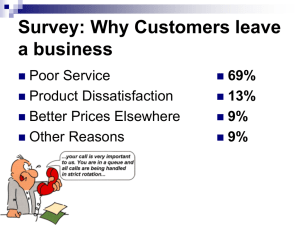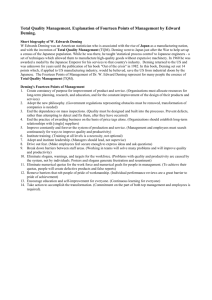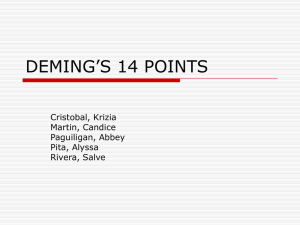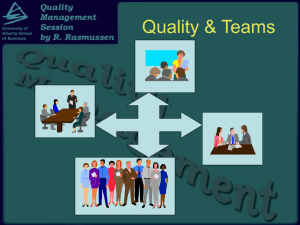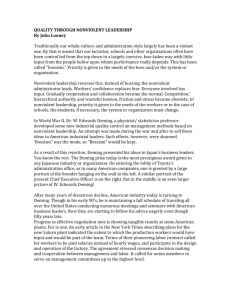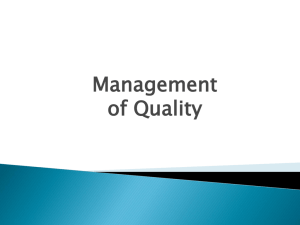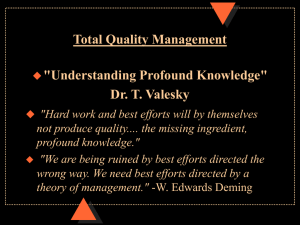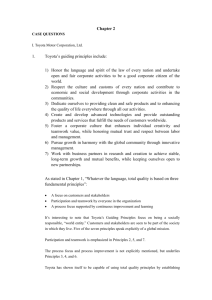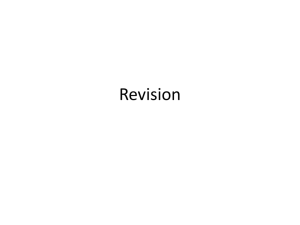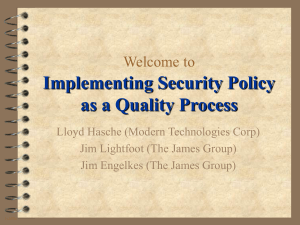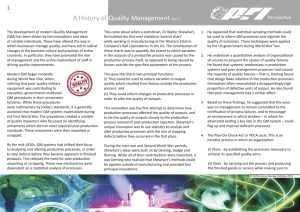THE COST OF A DISSATISFIED CUSTOMER (I)
advertisement
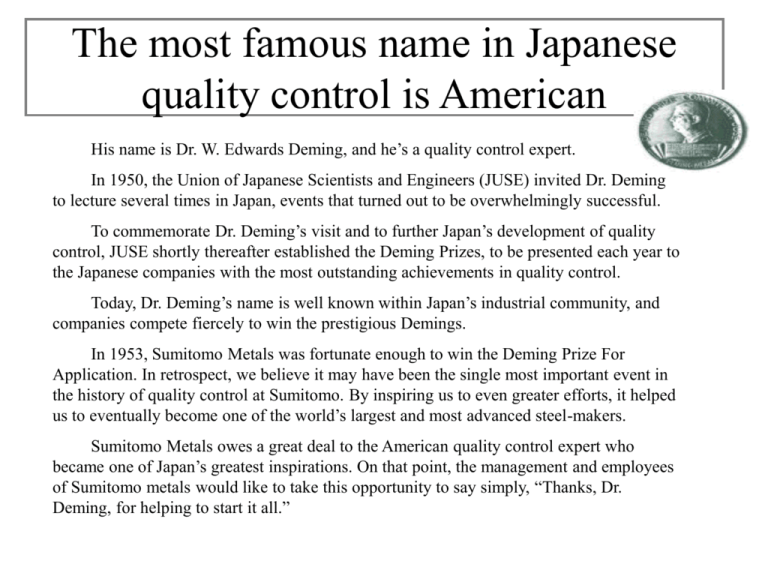
The most famous name in Japanese quality control is American His name is Dr. W. Edwards Deming, and he’s a quality control expert. In 1950, the Union of Japanese Scientists and Engineers (JUSE) invited Dr. Deming to lecture several times in Japan, events that turned out to be overwhelmingly successful. To commemorate Dr. Deming’s visit and to further Japan’s development of quality control, JUSE shortly thereafter established the Deming Prizes, to be presented each year to the Japanese companies with the most outstanding achievements in quality control. Today, Dr. Deming’s name is well known within Japan’s industrial community, and companies compete fiercely to win the prestigious Demings. In 1953, Sumitomo Metals was fortunate enough to win the Deming Prize For Application. In retrospect, we believe it may have been the single most important event in the history of quality control at Sumitomo. By inspiring us to even greater efforts, it helped us to eventually become one of the world’s largest and most advanced steel-makers. Sumitomo Metals owes a great deal to the American quality control expert who became one of Japan’s greatest inspirations. On that point, the management and employees of Sumitomo metals would like to take this opportunity to say simply, “Thanks, Dr. Deming, for helping to start it all.” THE DEMING FLOW DIAGRAM Design and redesign Suppliers of materials and equipment Receipt and test of materials A B C D Production, assembly, inspection Tests of processes, machines, methods, costs Consumer research Consumers Worksheet Customer Model INPUT OUTPUTS YOUR SUPPLIERS YOUR YOUR PROCESS REQUIREMENTS & FEEDBACK CUSTOMERS REQUIREMENTS & FEEDBACK Name two or three of your most important CUSTOMERS and what you or your group provides: My customers: What I provide them: Is there a quality gap between what I provide them and what they want? _____________________________________________ ______________ ________________________ ________________________ _____________________________________________ _____________________________________________ Worksheet Supplier Model INPUT OUTPUTS YOUR SUPPLIERS YOUR YOUR PROCESS REQUIREMENTS & FEEDBACK CUSTOMERS REQUIREMENTS & FEEDBACK Name two or three of your most important SUPPLIERS and what they deliver or provide to you or your group: My suppliers: What they provide me: Is there a quality gap between what I get and what I want? _____________________________________________ ______________ ________________________ ________________________ _____________________________________________ _____________________________________________ The Deming Chain Reaction Improve Quality Capture the market with better quality and lower price Costs decrease because of less rework, fewer mistakes, fewer delays, snags Stay in business Productivity improves Provide jobs and more jobs Definition of TQM Total Quality Management (TQM) consists of continuous process improvement activities involving everyone in an organization - managers and workers - in a totally integrated effort toward improving performance at every level. Elements of Quality Management Training Constancy of Purpose/Long-Term Commitment Focus on Process Total Employee Involvement/Team Work TQM Quantitative Methods Leadership Continuous Improvement Customer Focus Supplier Partnership The Old Way 1. 2. Design it Make it 3. Sell it The Shewhart Cycle 5. Redesign 4. Test it in Service 1. Design it Act Study 3. Market it Plan Do 2. Make it Fourth Generation Management Time GETTING BETTER FASTER What’s Different? The New, Excellent Organizations Concentrate on Process, Not on Problems PROBLEM PROCESS Motivate People Who is wrong? Define: responsibility Watch bottom line Measure people Define job Fix deviations “Do your job” Remove barriers What is wrong? Define: procedure Watch quality Measure systems Define customer Reduce variability “Can I help you?” “Improve things” “Obey orders”
